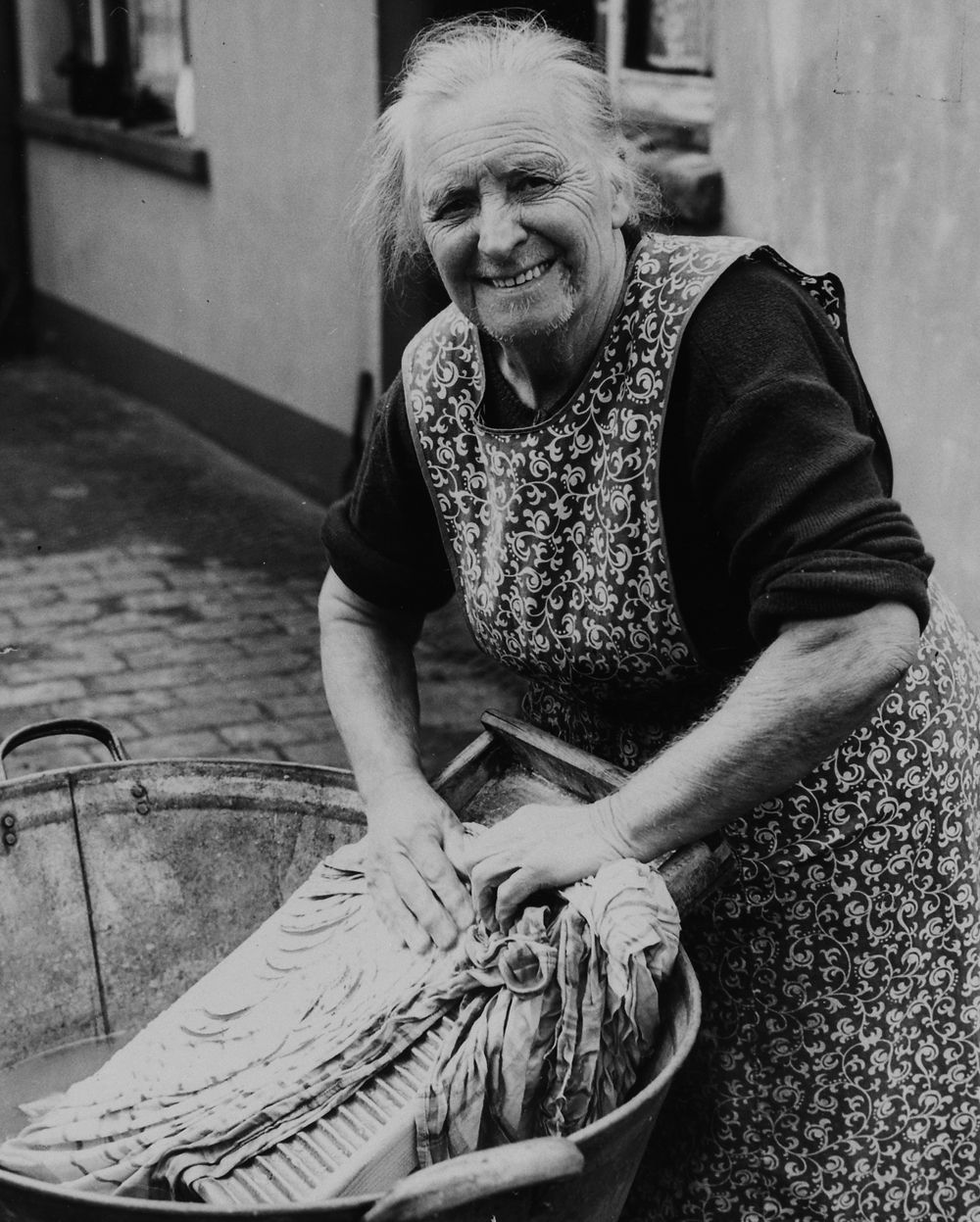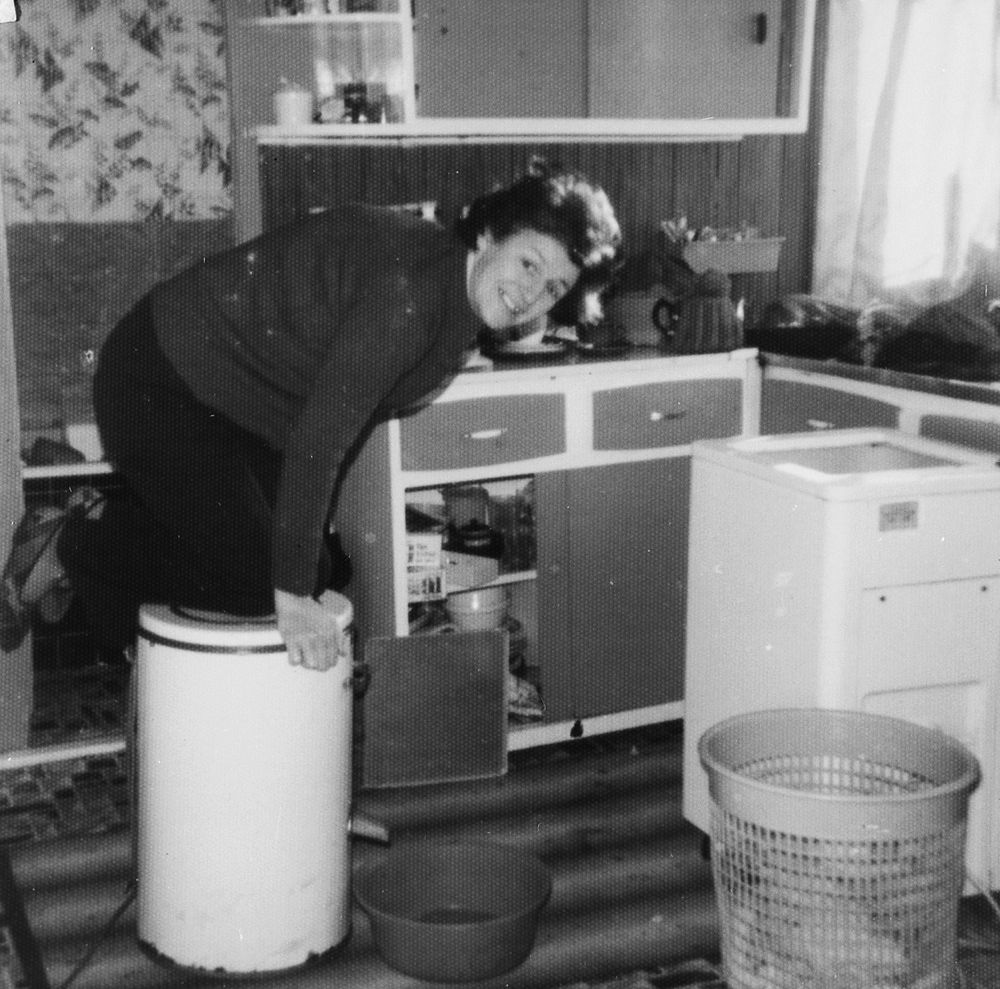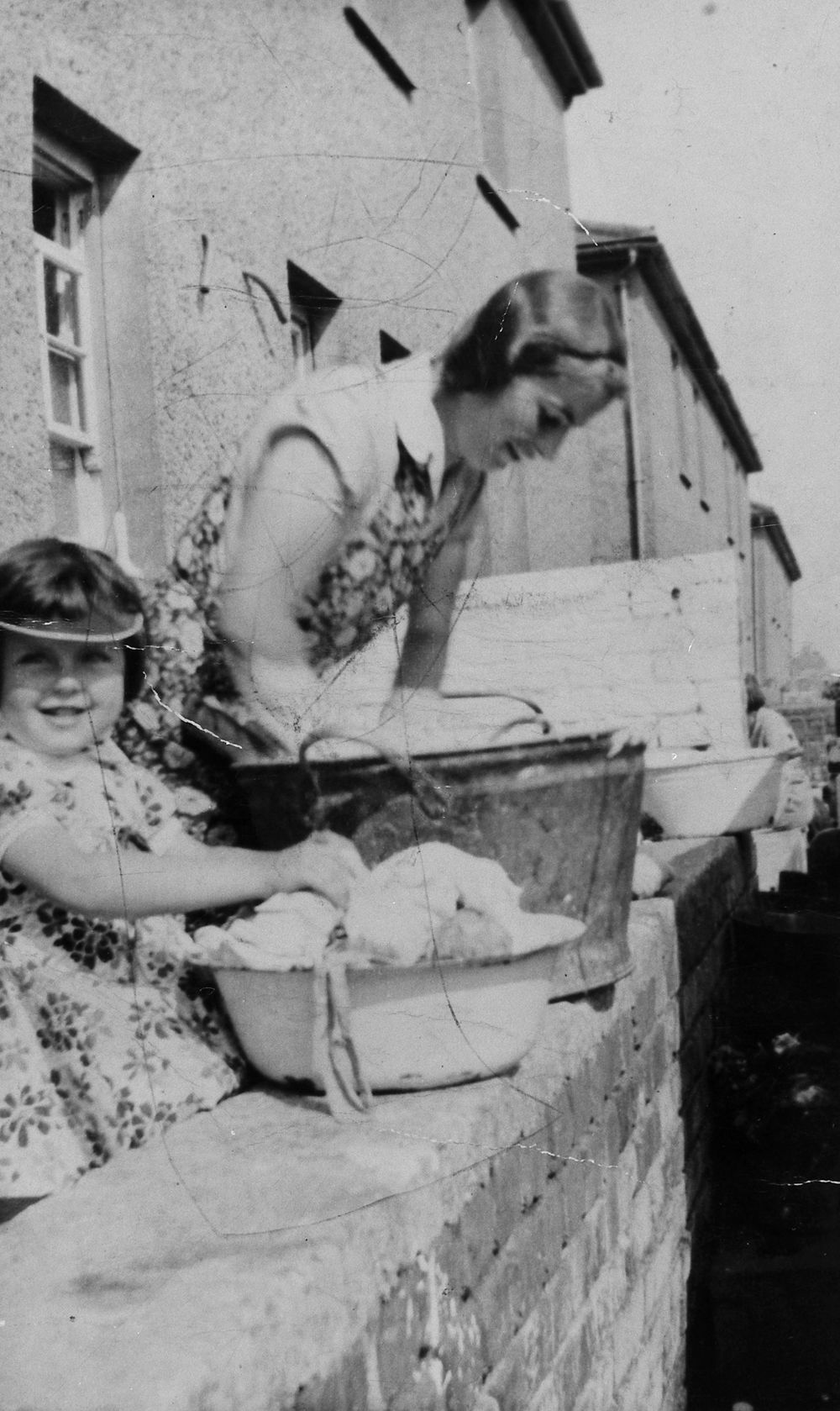Time for Washing! A New iBook About Washing Clothes Before the Washing Machine
, 18 October 2017
The new ‘Time for Washing’ iBook is about washing clothes in Wales before the advent of the washing machine. It’s been designed to be used by children and includes some games, as well as archive material to provide a visual context to the process of washing. Schoolchildren also have the opportunity to come to our museums to get a taste of what it was like to do the weekly wash by hand, something that went on well into the 20th century.
The washing, or ‘golch’
If you sometimes get a little fed up of putting a load through the wash followed by the hassle of drying them, only for them to be worn and land in the wash basket to be washed once again, then spare a thought for those who would have done this without the help of a machine.
As a facilitator at St Fagan’s National Museum of History, I play the part of Beti Bwt who does the washing in the farm’s laundry room with school groups. Many of the teachers have memories of their parents or grandparents washing clothes by hand, or of seeing washing equipment about the place.
This iBook complements the washday sessions at St Fagans which you can also take part in at The National Slate Museum and Big Pit National Coal Museum.
Method
Before washing machines, the weekly wash was a long, hard process. In Medieval times, this was done every month or two, depending on the supply of available clean, and took a few days to complete. Not having to wash your clothes for a long period of time was a symbol of status, as it showed that the household had plentiful supply of clean linen to keep them going.
By the 19th Century, equipment and product had advanced and so the washing became a weekly occurrence, every Monday to be precise. Women would try to finish the washing in a day, and it has been known for women to practically race against their neighbours to get it done.
Despite the available equipment, there was work to be done before even thinking about the clothes. Many houses didn’t have taps well into the 20th century, so it had to be fetched from a well, river or nearby communal tap, then warmed over the fire or in a copper.
Then soap or soda, depending on the clothes being coloured or white, was applied straight on to the clothing, that were rubbed up and down against the scrubbing board. They then went into the dolly tub, where the dolly was used to rinse them. After going through the mangle several times then being hung out to dry on hedges or a washing line, they were starched and ironed with an iron that had been heated in the fire.
The last clothes to be washed were the dirtiest, the work clothes. Fustian was worn by miners and quarrymen, and these would become covered with dust. This sound clip (in Welsh, English transcript below) is a recording of Kate Roberts, talking about washing the clothes of a quarryman.
Dr Kate Roberts, born in Rhosgadfan, Caernarfonshire, 1891 speaking about washing a quarryman's clothes
The iBook can be downloaded from iTunes, or via the website, where you can also find booking details for school groups to visit on of our museums and have a go yourself at doing the washing.
"The hardest work for the wife of the smallholder or the quarryman was washing their clothes. Now, the quarryman always wore corduroy trousers. And a linen coat under his jerkin, you see. Well, when he first went to the quarry, they were clean but then there was slate dust all over them, wasn't there? And they were washed only once a month and it was a terrible task. And the trousers got whiter and whiter as you wore them. They started out a brownish colour, you know, and then it would get whiter and whiter through being washed. The quarryman's wife dreaded wash day. She had a big pan to boil clothes and we had to do it all in the kitchen, you see. The pan was egg-shaped, oval, and had a handle like that over it. You could hang it from the handle if you wished. And then she had to boil these clothes, these fustian clothes, in water and soda, mind you!
We used to draw water from a water spout at the side of the house, you see. Not from a tap at all - water good enough to drink. It came through slates, down from the spring at the top of the field, and then down through a slate trough, you see, down to the water spout. Well, Mam, and I don't know how she did it, would carry this big, oval pan, with the working clothes in it, and put it under the water spout to rinse them, in all weathers. All weathers. And it was difficult to get them dry, terribly difficult in winter. But they would probably be put out to hang on the line if the weather was fair. They would drip, anyway, and she would bring them into the house to be washed and to dry"


